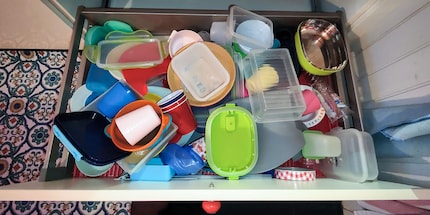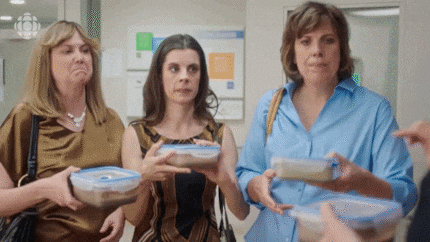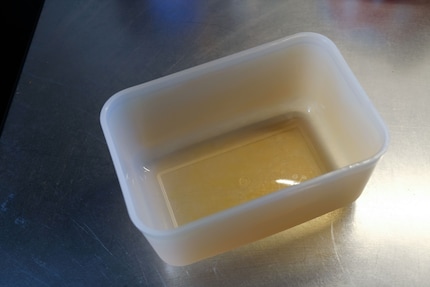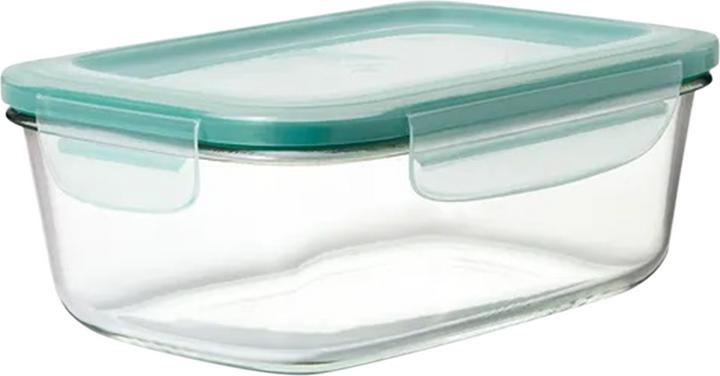

Five ways Tupperware changed our lives
Looks like Tupperware is on its way to that great big kitchen cabinet in the sky. The U.S. plastic container maker is plagued by acute liquidity concerns and its share price has plummeted by about half. This raises questions: how has Tupperware changed our lives, is there a way forwards, and how were things before?
The Tupperware success story began almost 80 years ago. In 1946, the company founded by Earl Silas Tupper launched its first home civilian products. Previously, Tupper had supplied the U.S. military with food containers and various plastic parts during World War II.
The advantages of plastic containers remain to this day. They’re easy to manufacture, lightweight, virtually unbreakable and, at least to some extent, neutral in taste and odour. Their main disadvantage is also being made of plastic. The material is causing more and more harm to people and the environment, and there’s already more than enough of it in the world.
Nevertheless, in most households and kitchens, Tupperware is indispensable. Below you’ll find a partial list of how and where small, medium and large plastic containers permanently changed our lives and habits:
1. The obligatory mess of Tupperware products
Kitchens are a place of cleanliness and order. Be it cutlery, crockery and supplies, everything has its fixed place and is neatly put away, stacked and piled up. Really, everything? Wrong! Every kitchen, no matter how tidy, has its Sodom and Gomorrah: the Tupperware drawer or cupboard. In this place of horror, unparalleled chaos reigns. Rectangular plastic containers pair unrestrainedly with round ones, lids block the drawer or disappear without a trace. There’s a nut for every bolt, less so for containers and lids it seems.
Combine this with the fact that sooner or later your own food containers will go on an endless journey through countless other households. Which is kind of the point, as they’re constantly replaced by new containers from family, friends and acquaintances. Whether you want them or not. Welcome to the perfect Tupperware cycle, a "(Tup)perpetuum mobile", if I can be so grand.
I once took the fall a few years ago, cleaning up and organising our Tupper drawer at home… The new state lasted less than a week.

Source: Patrick Vogt
2. Cooking in advance
For several years now, pre-cooking meals has been back in vogue. To make it come across cooler, it’s now called meal prepping. Amateur cooks spend the entire weekend in the kitchen preparing elaborate lunch menus, which are then neatly packaged in plastic containers labelled with the days of the week. This Tupperware orgy always ends up in the communal work refrigerator on Monday, resulting in a chronic lack of space due to other Meal Preppers. Still, at least corporate refrigerators have acquired a raison d’être.
3. Tupperware as an excuse
A bold thesis: Tupperware contributes significantly to peace in society.
How could I possibly think that?
Well: imagine you’re invited to dinner at someone’s house, someone you actually don’t even like that much. But cancelling isn’t an option for whatever reason, maybe the invitation comes from your in-laws. So you act like the exemplary guest, put on a friendly face and eat, in part to make as little conversation as possible.
But no matter how much you eat, there’s always leftovers. This is where Tupperware comes into play. Instead of having to come back the following evening to eat with unpleasant company, you can have the leftovers packed into practical plastic containers and eat them at home in peace. This reduces the risk of escalation enormously and helps to keep the house in order.
An advanced tip: bring your own Tupperware with you, then you won’t be in debt later on.

4. Tupperware against food waste
Speaking of leftovers, they can be quite the issue depending on who’s cooking. At least in the past, leftovers were often on the menu until they were all eaten. Not everyone likes that, and it’s thankfully no longer necessary. Today, you simply put leftovers in a plastic box and put them in the fridge.
In the best-case scenario, you take them out two days later and reheat them (at least then the leftover meal has been delayed a bit)… but in the vast majority of cases, you and I forget about the leftovers in the depths of the fridge and throw them in the trash weeks later. Sometimes along with the Tupperware, we often can’t bear looking at the excesses of our forgetfulness any longer.
That’s why we have to be honest and critical with ourselves at this point. In the fight against food waste, Tupperware is a blunt weapon. Plastic containers quite often don’t prevent food waste, just delay it.
5. Creativity through Tupperware
Tupperware comes in a wide variety of colours. Want it even more colourful? No problem: store particularly colour-intensive foods, such as tomato sauce, in it long enough, and the plastic box will take on its own personal hue. If you do this often and long enough, none of the cleaning tips like baking soda and citric acid will help. The red tint or rather your personal colour will remain.

Source: Simon Balissat
Earl Silas Tupper undoubtedly made a difference with his invention and changed our habits. However, if his company does go downhill, it’s no reason to despair. For a long time now, there have been countless imitators manufacturing and selling plastic containers. They’re even cheaper than the original.
What do all these products have in common, though? We call them Tupperware. The product has long since become a brand, regardless of the manufacturer. So, despite the possible death of Tupperware, you and I can continue to meal prep in complete relaxation, packing leftovers in plastic boxes to forget about in the fridge.
The U.S. company itself can nevertheless be wished good luck and success in its fight for survival, if only because of its more than 10,000 employees worldwide. Who knows, maybe a completely new product could contribute to the brilliant resurrection of Tupperware. In any case, we already have some ideas.
Header cartoon: Stephan Lütolf
I'm a full-blooded dad and husband, part-time nerd and chicken farmer, cat tamer and animal lover. I would like to know everything and yet I know nothing. I know even less, but I learn something new every day. What I am good at is dealing with words, spoken and written. And I get to prove that here.
This is a subjective opinion of the editorial team. It doesn't necessarily reflect the position of the company.
Show all



